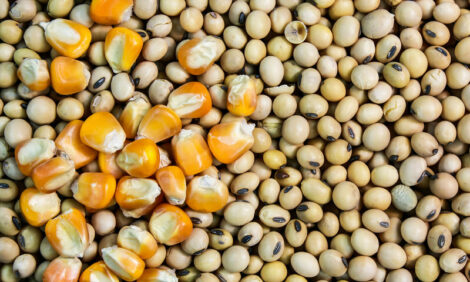



USGC: Growers Deal with Poor Corn Results
GLOBAL - With the US corn crop expected to be short following the drought this year, global grain buyers are looking for options to help contain costs. At the same time, farmers in exporting countries around the globe are looking to take advantage of current prices by growing and shipping more corn and coarse grains to willing buyers.Argentina is the world's second-largest corn exporter, and some farmers there are looking to plant their 2012-13 crop early in hopes of taking advantage of recent rains and the run-up in prices due to the drought in the United States.
A US Grains Council (USGC) consultant said corn exports for the country's marketing year are approximately 13.5 million tons. However, traders in the region are expecting the government to approve export licenses for another 1.5 million to 2.0 million tons in September. That would bring exports from the country close to the 16.0 million in exports projected by the US Department of Agriculture in its August global supply and demand report.
The consultant said Argentina corn exports are ahead of last year and about half of the ountry's exports go to Colombia, South Korea, Malaysia and Peru. While USDA lowered its estimate of Chinese corn imports for the year, the former director of the China's State Administration of Grain said China could look to buy some of its corn needs from Argentina or other exporters, as US corn is priced out of the local market. USDA estimates 2012-13 average US corn prices to be in the $7.50-8.90 per bushel ($295-350 per ton) range.
USDA estimates China's corn production at 200 million tons for the year, although officials in the country are saying the crop may be around 197 million tons. The US Grains Council's Beijing office conducted a north China crop tour in July and found a large crop, but the Council will conduct its fall China harvest tour in September to help global grain traders get a better understanding of the country's 2012-13 crop.
Corn production in and exports from the Former Soviet Union (FSU) and Ukraine were lowered this month, as were total coarse grains in the two Black Sea exporting regions, due to warm and dry conditions. Wheat exports were lowered by 4 million tons to 8 million tons in Russia but were increased by 2 million tons to 6 million tons in exports for Ukraine. Wheat's importance grows as a feed source as corn prices rise.
As for corn, Ukraine's exports were lowered 1.5 million tons to 12.5 million, while FSU exports were lowered 1.5 million tons to 14.4 million.
Bill Tierney, chief economist with Chicago-based AgResource Co., told a news service that buyers will not be taken by surprise should Russia and Ukraine move to curtail exports as they did in 2010. While governments of both countries have moved to assure buyers there will be no export ban – or de facto ban – the concern still exists. Some traders said they expect exports in the region to end late this year.
Russia enters the World Trade Organization this week, but analysts have said that would not prevent the country from imposing quotes, taxes or embargoes to protect its own supply.
"Whether Ukraine or Russia moves to halt or slow exports remains to be seen. Certainly buyers are leery, which makes an important point that is difficult to rebuild trust and reliability once you shut the door," said Cary Sifferath, who operates the US Grains Council's office in Tunis, Tunisia.
USDA estimated Brazil's corn exports at 14.0 million tons for 2012-13, on par with last year.
South Africa lowered corn production forecast marginally to 10.8 million tons. This may tighten the country's balance sheet for 2012-13. The country has exported more than 290,000 tons of white corn to Mexico this year.
Dry conditions are impacting crops in several regions of India and will likely reduce production figures. USDA, however, still anticipates the country will still export wheat, rice, cotton and soybean meal this year.






